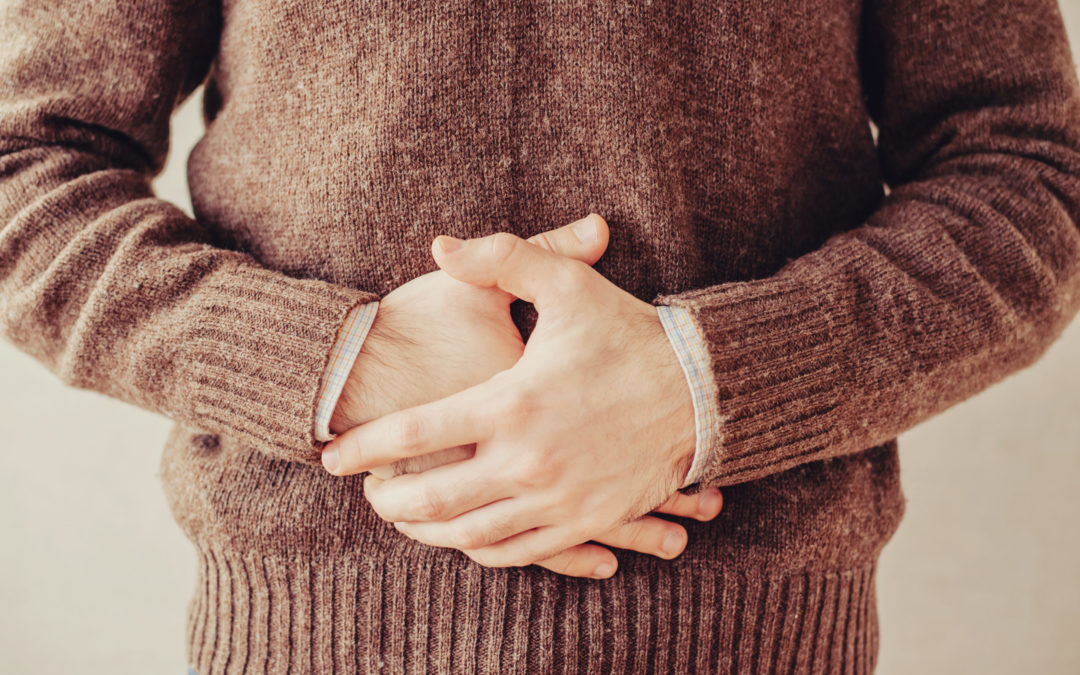Hunger is painful. And scary for most people. Enough of it will break anyone’s determination to lose weight and improve their health. 😩
Anyone who has ever followed the conventional dieting advice of restricting calories and exercising more probably remembers suffering with hunger. We have to lean HARD on our willpower to push through it, and this never lasts.
What if there was a way to eliminate hunger?
What if you could lose weight and reverse your Type 2 Diabetes without battling hunger constantly?
That is what I want to offer you.
As I teach with all things though, really understanding what is going on, or “knowing your enemy,” is the best weapon you have against it.
Hunger is controlled by a complex system of signals between your body and brain. I’m going to keep this as simple as possible to help you apply this information right away.
Before we get into the details, however, I want to make sure I separate true physical hunger from psychological hunger. Some of my clients cannot tell the difference right away. 🤔
True physical hunger is a sensation. It comes from your body and travels to your brain. We are going to go into detail about these signals and why for many of you, they are all out of wack. Resetting these by cleaning up your diet will help tremendously if you are one that struggles with hunger.
Psychological hunger comes from our brain and travels to our body. You might think of it as a craving or urge to eat. Hunger is a highly suggestible state because we can see or smell food, even think about food, and suddenly feel hungry. 💭🤤
Some of us have used food to celebrate or comfort ourselves for much of our lives. We might think we are hungry, but when we really check in with our bodies, it isn’t physical hunger that we are noticing. This is so important to distinguish because emotional eating can sabotage our best efforts.
Don’t think you’re an emotional eater?
Think about yesterday or the last couple of days. What percentage of the time did you eat or drink something when you weren’t actually hungry? I would guess many of us have so many ingrained habits around eating that we rarely experience true physical hunger.
We eat because it’s time to eat. Or because we are concerned that we might get hungry later when we can’t break away to eat. Or because something showed up in the break room at work that looked tempting. There are hundreds of reasons why we eat that have nothing to do with physical hunger, so it’s good to know what yours are.
Physical hunger is controlled by hormones
There are 2 main groups of hormones: those that stimulate hunger and promote appetite and those that promote satiety and decrease appetite.
- Hormones that increase hunger and appetite:
- Ghrelin: the well known “hunger hormone” made mostly by the stomach when empty that signals the part of your brain that stimulates hunger.
- Cortisol: the steroid hormone produced by the adrenal glands that is released in response to different kinds of stress. Physical stress (illness, sleep deprivation, etc) and emotional stress (anxiety, fear, etc) increase cortisol release.
- Hormones that decrease hunger and appetite:
- Insulin: elevated insulin levels decrease hunger, but in people with insulin resistance and Type 2 Diabetes, this signal is impaired.
- Leptin: the hormone produced by fat cells that decreases appetite. Found to be 4 times higher in obese people. High insulin levels block this signal to the brain.
- Gut hormones (peptide YY, cholecystokinin, GLP-1): various hormones released by the GI tract that signal fullness and satiety to the brain. Released strongly in response to consuming fats and proteins rather than refined carbohydrates (sugar and flour).
What does this even mean?
That’s a lot of technical information I just unloaded on you. 🤓
Now I want to make this meaningful for you. Here are the ways that this information might matter to you:
- Hunger signals get all out of balance when there is insulin resistance and high levels of insulin around. Insulin blocks access to fat stores, making you dependent on glucose for fuel. When glucose levels get low, your body needs you to raise your glucose levels and hunger feels urgent and intense.
- Insulin blocks your brain from responding to leptin, the hormone released by fat cells that decreases appetite. This is called leptin resistance and is common in obese people. So even though there is an abundance of energy in the form of body fat, people feel like they are starving!
- A low fat/high carb diet not only drives insulin levels up but doesn’t send satiety signals to the brain. This is why a big bowl of cereal doesn’t fill you up, but the idea of eating anything more after an 8 oz steak is nauseating (unless it’s dessert, right?). Fats and proteins produce strong satiety signals to the brain. If you replaced oatmeal + a banana for breakfast with 2 scrambled eggs + 2 sausage links, you probably won’t be looking for a snack at 10:30am to tide you over till lunchtime.
- Keeping stress levels low and getting enough sleep keep cortisol levels in check, which helps regulate appetite.
- Hunger comes in waves. Think of a time when you weren’t able to eat on schedule. Sure, you got
hungry. But if you were distracted, after short time, your hunger probably went away. Check out this graph of ghrelin patterns measured in subjects undergoing a 33 hour fast. Notice how it comes in waves and seems to correspond to most Americans’ mealtimes. We train our bodies to expect food at certain times.
- Hunger signals decrease in intensity when they are properly balanced. Most of us have experienced the painful, urgent kind of hunger that feels like an emergency. There is no hope of ignoring it because it feels like agony. We fear that it will continue to build in intensity until we can’t bear it anymore. The good news is that this isn’t at all the case. When our hormones are balanced, hunger becomes more of an uncomfortable reminder. A strong suggestion, if you will. Once your body is able to access fat for fuel when you don’t feed it right away, hunger takes care of itself. This happens when you are “fat adapted.” Our bodies are designed to store fat in times of plenty and then use this to sustain us when food is unavailable. We have dozens of “meals” in the form of stored fat on our bodies. Your body learns to efficiently burn fat when you stop your dependence on sugar for fuel.
Dietary strategies that eliminate hunger and reverse insulin resistance
Now that we understand better what is driving hunger and satiety, we can logically find our way to the solution.
Here are my TOP 5 strategies for taming hunger so that you can reach your goals:
- Cut out the refined carbohydrates. This is anything processed and made primarily from sugar and flour. These drive up insulin and promote insulin resistance.
- Watch your other carbs. You don’t have to eliminate them, but you’ll want to pay attention to these because they will require your body to make insulin. Trade them in for fats and proteins. Remember, keeping insulin levels LOW will allow you to reverse insulin resistance and burn fat for fuel.
- Eat plenty of protein and natural fats to keep you satisfied. Avoid trans fats like vegetable oil. Fats that come from plants and animals are the ticket. Heavy cream, butter, olive oil, bacon, eggs, salmon, nuts (and nut butters), and avocados are all great examples. These not only destroy hunger but require almost no insulin to process. Don’t go overboard, but rather use them as a tool to control hunger.
- DO NOT SNACK and restrict your eating window gradually. This means narrowing the window of your 24 hour day in which you are in a fed state. Most people are beginning to consume meals early in the morning and continuing almost until bedtime. This could lead to a 14 hour eating window everyday. Start narrowing it down. Shrink it by 2 hours and let yourself get accustomed to that, then shrink it some more. The goal is to allow yourself to remain in a fasted state more of the day than a fed state. We all fast when we sleep. Extend that period. This reduces insulin levels and helps reset your leptin and ghrelin levels.
- Drink plenty of water and get enough sleep every night. If we are dehydrated or thirsty, sometimes we mistaken this for a hunger sensation. The best rule to follow is not a mandatory volume of water everyday, but rather a practical and logical guideline. Just drink enough water to keep your urine pale yellow consistently. I have already mentioned why sleep is so important. Physical stress including sleep deprivation raises cortisol levels, which makes us hungry and raises blood sugar levels, thereby raising insulin in the body. This is all no bueno for anyone trying to reverse Type 2 Diabetes.
The last piece of advice I want to offer you is: if you’re feeling hungry, make sure you check in with your body to see if it’s truly physical hunger. Is it just that you are bored, thinking about food, or wanting to eat for some other reason?
An easy way to tell if you’re really hungry is to ask yourself, does a healthy meal sound good to me right now? Or am I just craving something that isn’t good fuel for my body?
Mastering emotional eating is a whole other skill set that I can teach you as well. It is possible to only eat when you are physically hungry. Want to know more?
Reach out here and I can explain:



